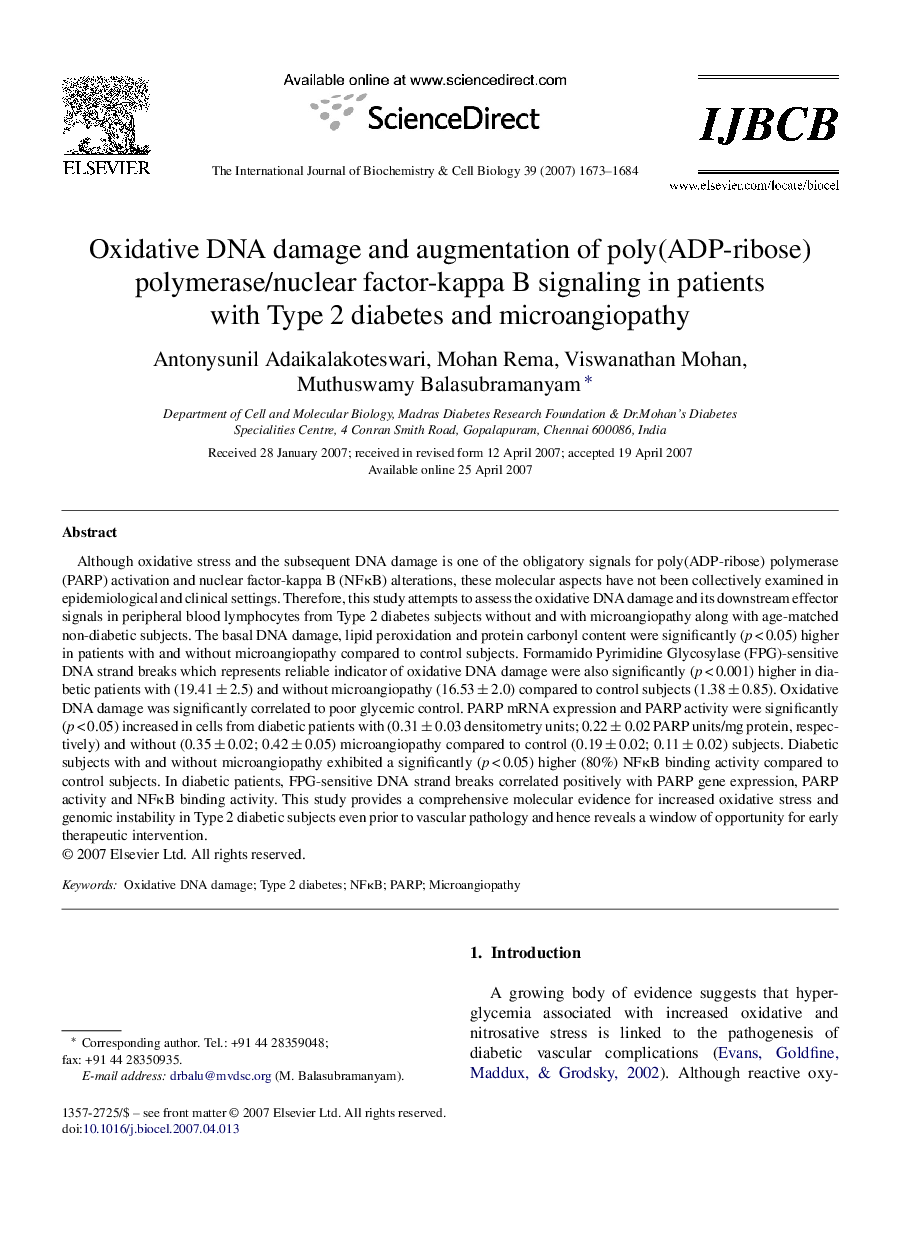| Article ID | Journal | Published Year | Pages | File Type |
|---|---|---|---|---|
| 8326363 | The International Journal of Biochemistry & Cell Biology | 2007 | 12 Pages |
Abstract
Although oxidative stress and the subsequent DNA damage is one of the obligatory signals for poly(ADP-ribose) polymerase (PARP) activation and nuclear factor-kappa B (NFκB) alterations, these molecular aspects have not been collectively examined in epidemiological and clinical settings. Therefore, this study attempts to assess the oxidative DNA damage and its downstream effector signals in peripheral blood lymphocytes from Type 2 diabetes subjects without and with microangiopathy along with age-matched non-diabetic subjects. The basal DNA damage, lipid peroxidation and protein carbonyl content were significantly (p < 0.05) higher in patients with and without microangiopathy compared to control subjects. Formamido Pyrimidine Glycosylase (FPG)-sensitive DNA strand breaks which represents reliable indicator of oxidative DNA damage were also significantly (p < 0.001) higher in diabetic patients with (19.41 ± 2.5) and without microangiopathy (16.53 ± 2.0) compared to control subjects (1.38 ± 0.85). Oxidative DNA damage was significantly correlated to poor glycemic control. PARP mRNA expression and PARP activity were significantly (p < 0.05) increased in cells from diabetic patients with (0.31 ± 0.03 densitometry units; 0.22 ± 0.02 PARP units/mg protein, respectively) and without (0.35 ± 0.02; 0.42 ± 0.05) microangiopathy compared to control (0.19 ± 0.02; 0.11 ± 0.02) subjects. Diabetic subjects with and without microangiopathy exhibited a significantly (p < 0.05) higher (80%) NFκB binding activity compared to control subjects. In diabetic patients, FPG-sensitive DNA strand breaks correlated positively with PARP gene expression, PARP activity and NFκB binding activity. This study provides a comprehensive molecular evidence for increased oxidative stress and genomic instability in Type 2 diabetic subjects even prior to vascular pathology and hence reveals a window of opportunity for early therapeutic intervention.
Related Topics
Life Sciences
Biochemistry, Genetics and Molecular Biology
Biochemistry
Authors
Antonysunil Adaikalakoteswari, Mohan Rema, Viswanathan Mohan, Muthuswamy Balasubramanyam,
